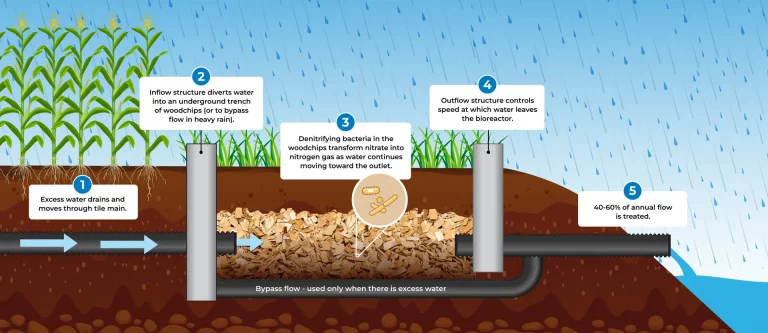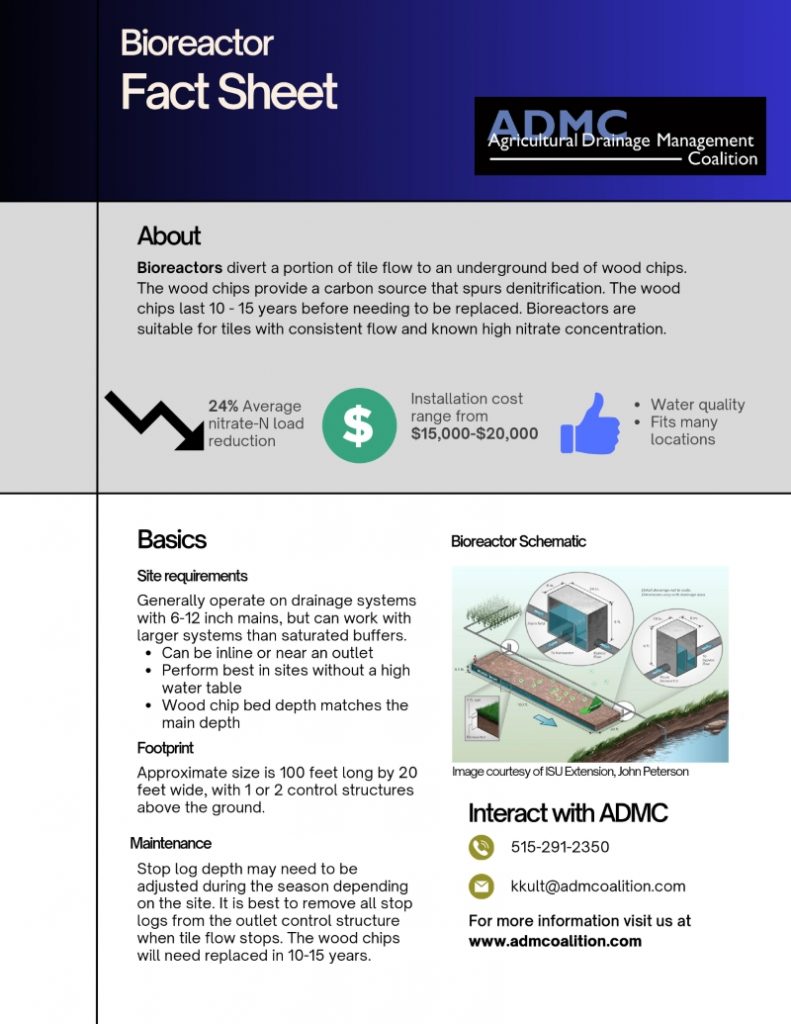Welcome to Ecosystem Services Exchange!
Our Services
Denitrifying Bioreactors
A denitrifying bioreactor is a water quality focused conservation drainage practice used to remove nitrates from subsurface drainage tile lines. A water control structure is used to divert drainage into an engineered and designed pit of woodchips, which use carbon in the wood as an energy source that supports soil microorganisms that convert harmful nitrates into gas.
Denitrifying Bioreactors are one of several practices that may be used to help reduce excessive nitrate concentration in tile drained water

Typically the Bioreactor is installed at the end of a tile system just before the drainage water enters a drainage ditch or stream. Water control structure is installed on the tile line and the structure allows the operator to divert some of the drainage flow to the bioreactor chamber.
The bioreactor chamber is a pit excavated into the ground near the tile line. The pit is lined with plastic and filled with wood chips. The plastic is installed to keep the soil from migrating into the wood chips, and to make sure that the tile water stays in the wood chip chamber long enough to adequately remove the nitrates. The pit is filled entirely with wood chips, and a protective layer of soil at least 2 feet deep is placed over the wood chips to protect the chamber from surface water and if vehicular traffic is expected over the site.
Installation of the bioreactor involves plumbing as well as wood chips. Pipes connect the control structure in the main tile line with a distribution manifold (perforated pipe) at the beginning of the bioreactor chamber. At the other end of the chamber, a collector pipe gathers up the treated water and sends it through a structure, on out to the ditch or stream.
The real work in the bioreactor is accomplished by denitrifying bacteria. These organisms colonize the wood chips, using the carbon in the wood as an energy source and reducing nitrates in the water to nitrogen gas. The bioreactor is designed to last at least 10 years.
How will it affect my drainage system?
During periods of high flow in the tile system, the structure is set to bypass excess flow without going through the bioreactor. Since the tile system does not flow full most of the time, this strategy is a good way to make sure that most of the nitrates in the tile water is removed without negatively affecting the tile systems ability to drain.
Looking for more information on Bioreactors?

At ESE, we combine science, service, and sustainability to deliver better results for both agriculture and the environment
Top Links
Services
© Copyright 2025 Ecosystem Services | Developed by Yahyou, UAE

